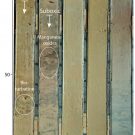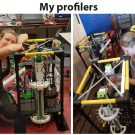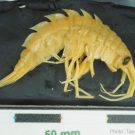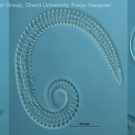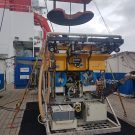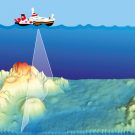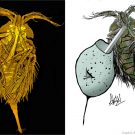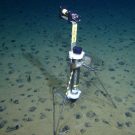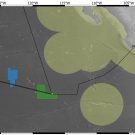by Dr. Julia Otte, AWI and Jessica Volz, AWI (deutsch s. u.) What gravity cores can tell us about the biogeochemistry of the Deep The deep sea has fascinated mankind since the early odysseys across the oceans – many myths have been told about the depths of the sea with the dreaded Kraken and Moby […]
Supervising sensitive deep-sea sensors / Überwachung sensibler Tiefsee-Sensoren
by Elena Schiller, AWI (deutsch s. u.) Essentials of deep-sea research technology: The first thing I learnt upon entering a deep sea technology workshop was “non-corrosive steel is non-corroded on the day of delivery”, which leads me to my first topic: materials. We tend to avoid most metals because seawater is highly corrosive. So we […]
Catch It If You Can! – Amphipods in the Deep-Sea
by Tasnim Patel, RBINS Life in the deep-sea is no picnic and dedicating your life to studying our last truly unexplored wilderness isn’t easy either. To sample fauna in the abyssal plains requires courage, expertise, commitment, financial backing and in my case …a pinch of luck. I’m studying deep-sea scavenging crustaceans, which are not only […]
Deep-sea gardening
by Dr. Freija Hauquier, Ghent University Underneath the seafloor lies an entire world of small animals crawling between the sediment grains, well hidden from the human eye at first glimpse. Yet they are numerous, diverse, and equally deserve our attention in the context of deep-sea mining. Sure, studying them requires a bit more patience than […]
The ROV on board SONNE 268
The largest and probably most expensive scientific equipment on board of RV SONNE on the present leg is a remotely operated deep-diving “robot” called ROV KIEL 6000. “ROV” is the abbreviation for “Remotely Operated Vehicle”. The ROV provides “eyes and arms in the deep sea”. ROV KIEL 6000, which got its name from the city […]
Mapping the seafloor/Die Kartierung des Meeresbodens
(Deutsche Version unten) How do you plan research that is to be conducted at the seafloor in 4000 meter water depth? How do you choose the locations for your studies in a large area that you may not know much about yet? How do you pick the best spot to deploy sensors? – Which path […]
Phantastische Tierwesen und wo sie zu finden sind/Fantastic Beasts and Where to find them
(English version below) Tief, fremd und unbekannt: So wird die Tiefsee häufig beschrieben. Die meisten der Tiere in der dunklen Tiefseeebene 4000 Meter unter unserem Schiff sind bisher unentdeckt und nur wenige wurden wissenschaftlich beschrieben. Hier möchten wir einige der Arten vorstellen, die wir während der Fahrt SO268 bereits entdeckt haben oder von denen wir […]
BOBO and the 7 (+7) dwarfs: How to sense the deep sea
by Sabine Haalboom (NIOZ) The first half of the cruise has passed and we’ve finished the baseline studies in the Belgian license area. Doing my PhD research in marine geology at the Royal Netherlands Institute for Sea Research (NIOZ), my main interest is the particle dynamics in the bottom boundary layer (i.e. the layer close […]
Location, Location, Location
Working areas and sampling sites during cruise SO268 of RV SONNE by Timm Schoening (GEOMAR) and Peter Urban (GEOMAR) RV SONNE cruise SO268-2 followed in the footsteps of the first leg of this expedition – SO268-1. We continue to sample the diverse seafloor in two main working areas within the Clarion-Clipperton-Zone (North-East Pacific). Our scope […]
